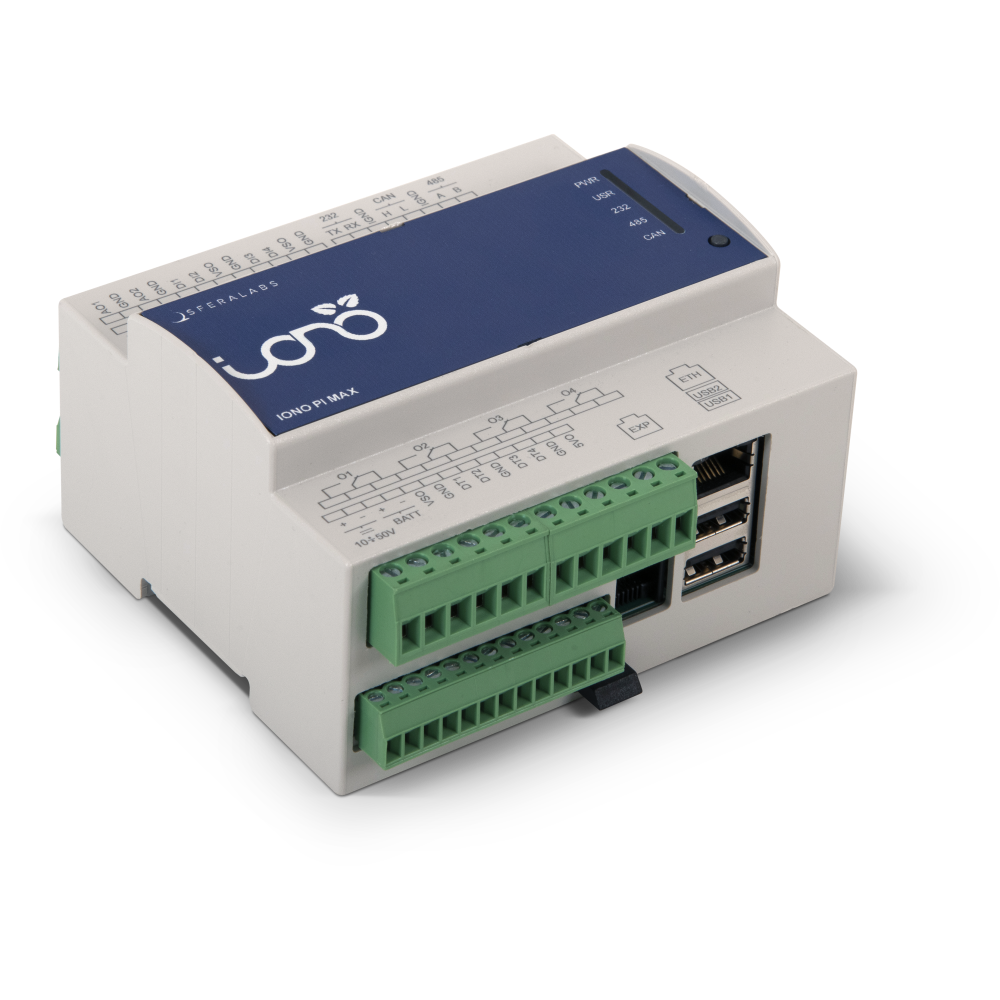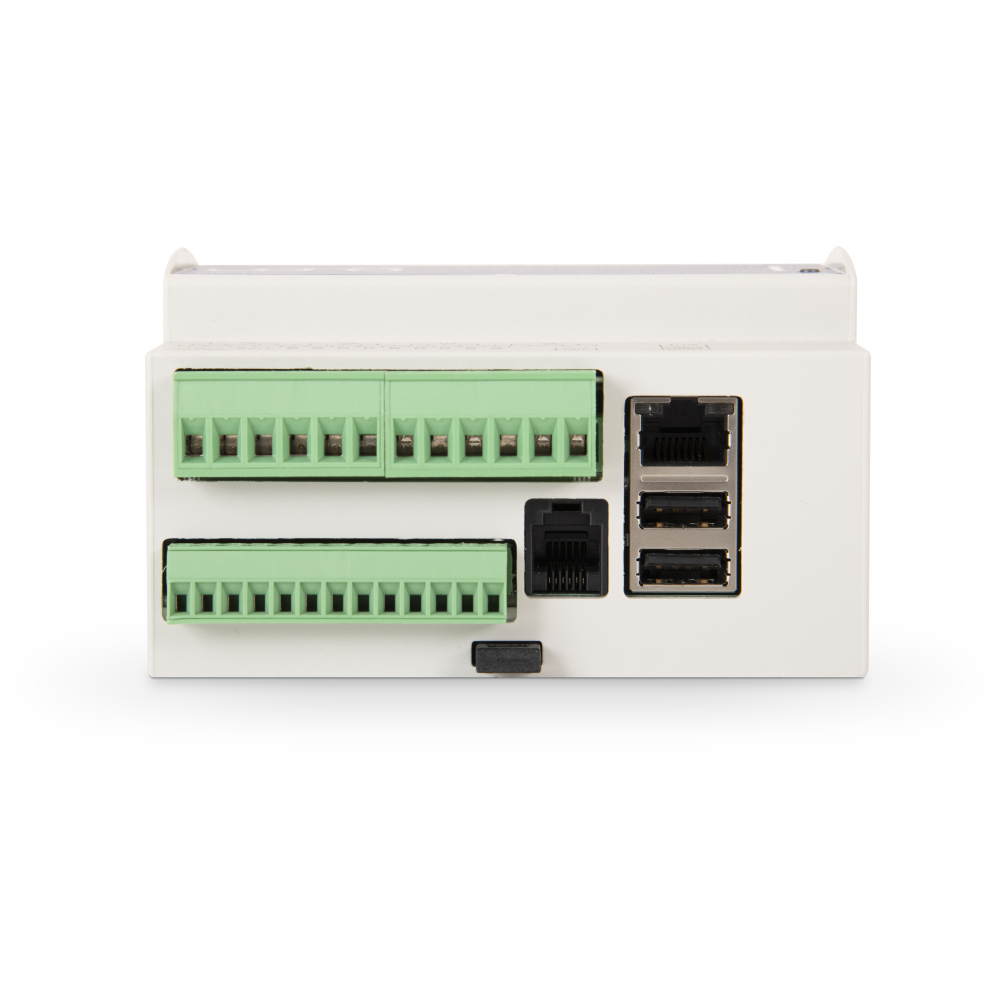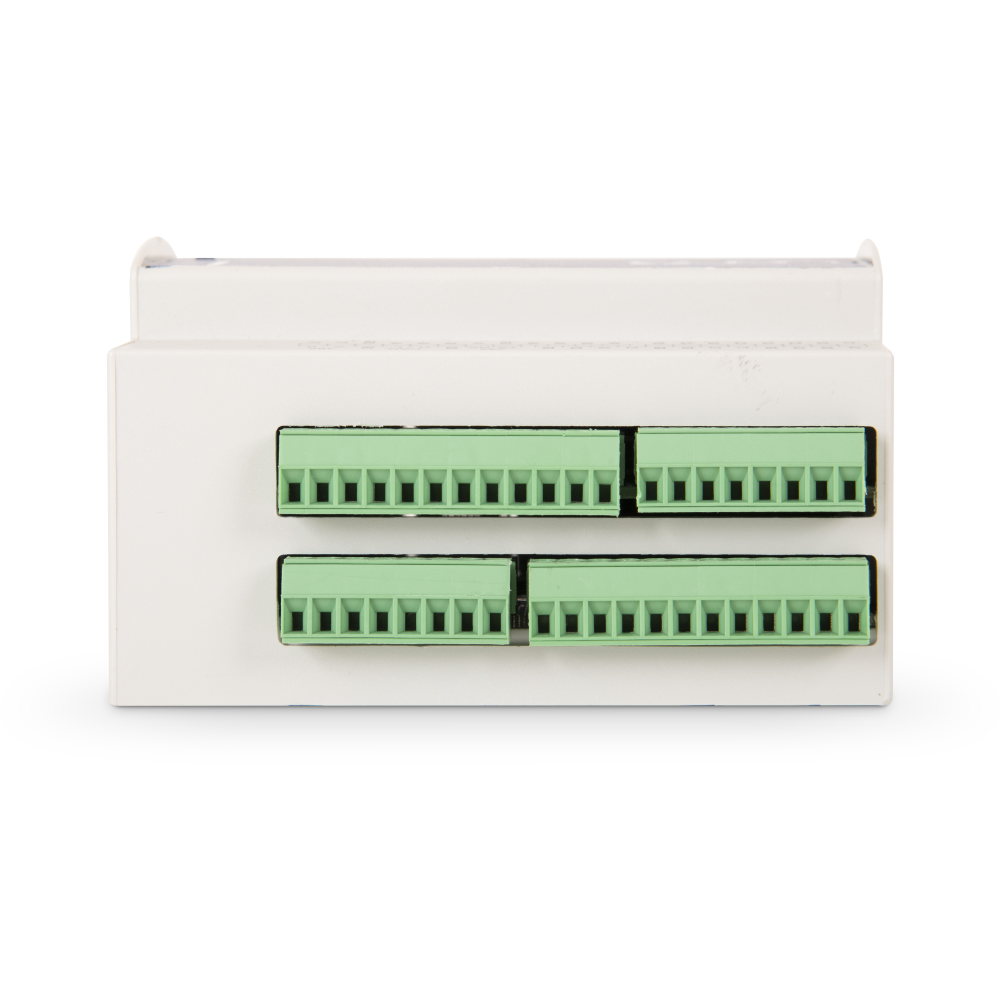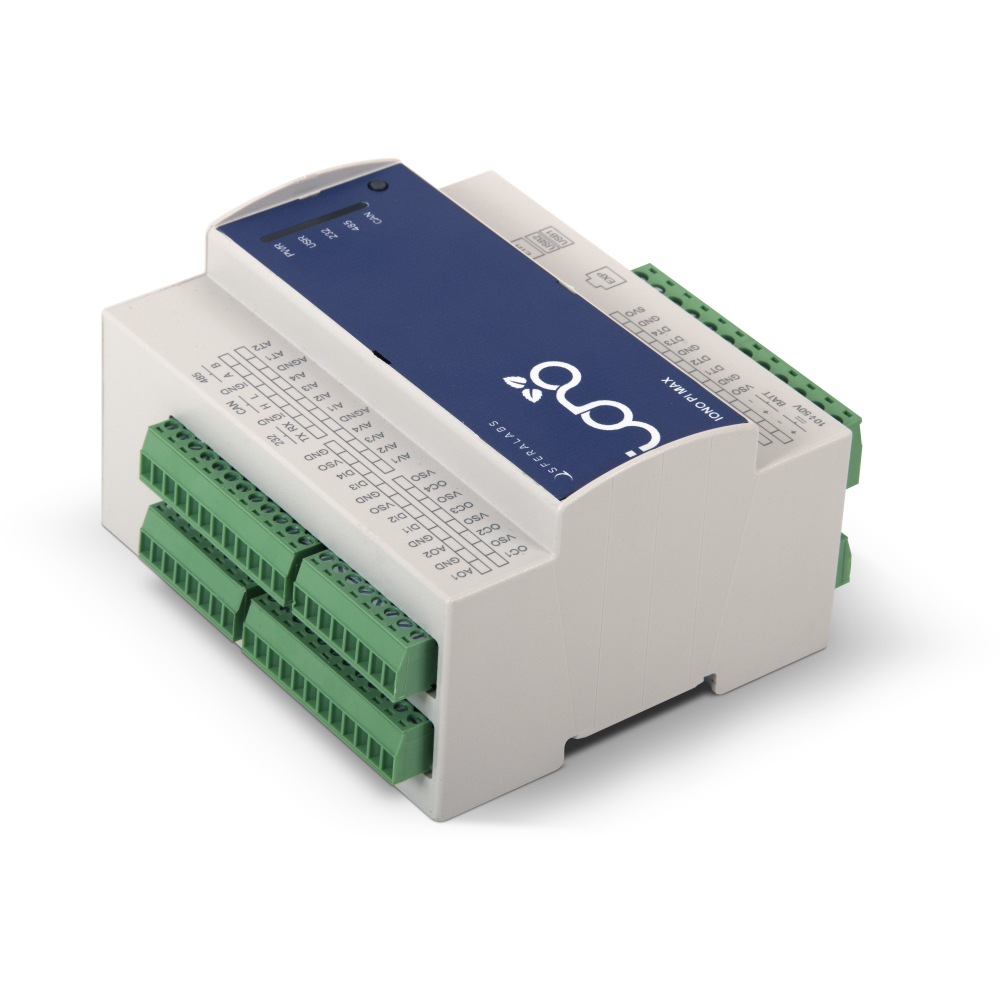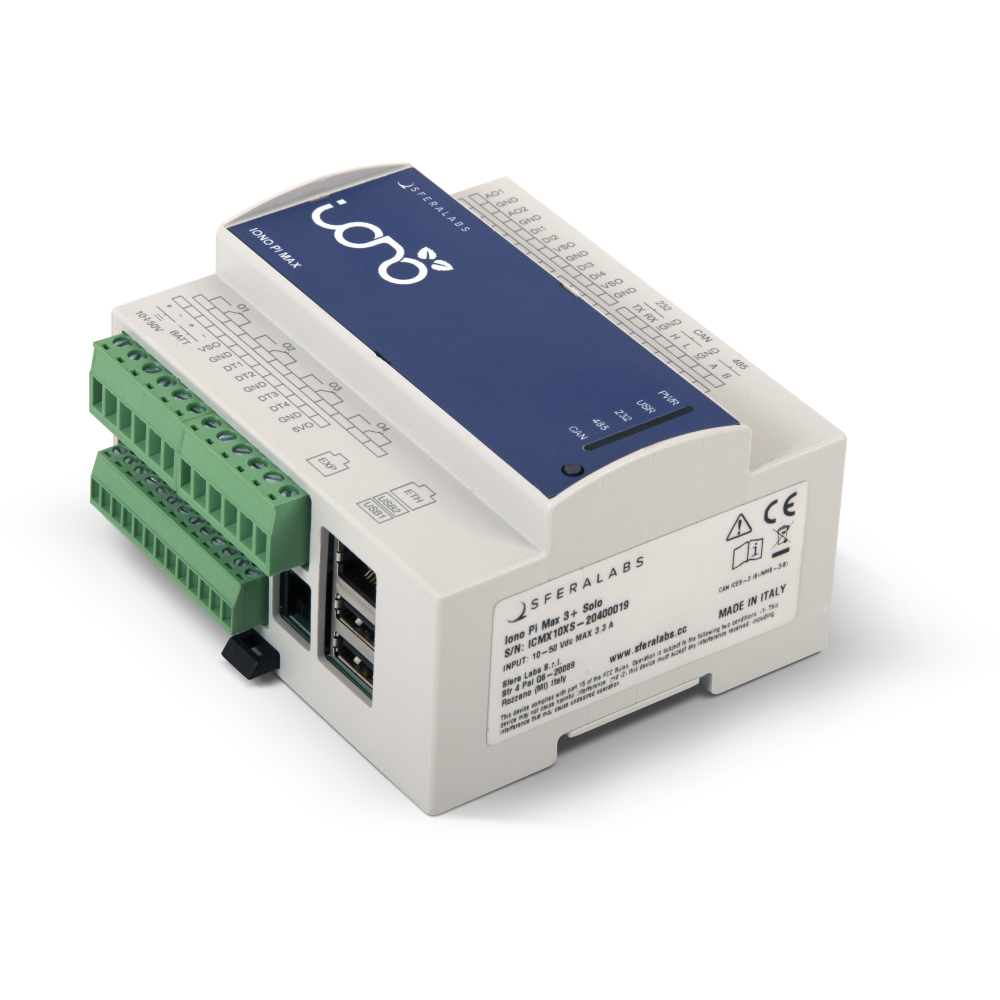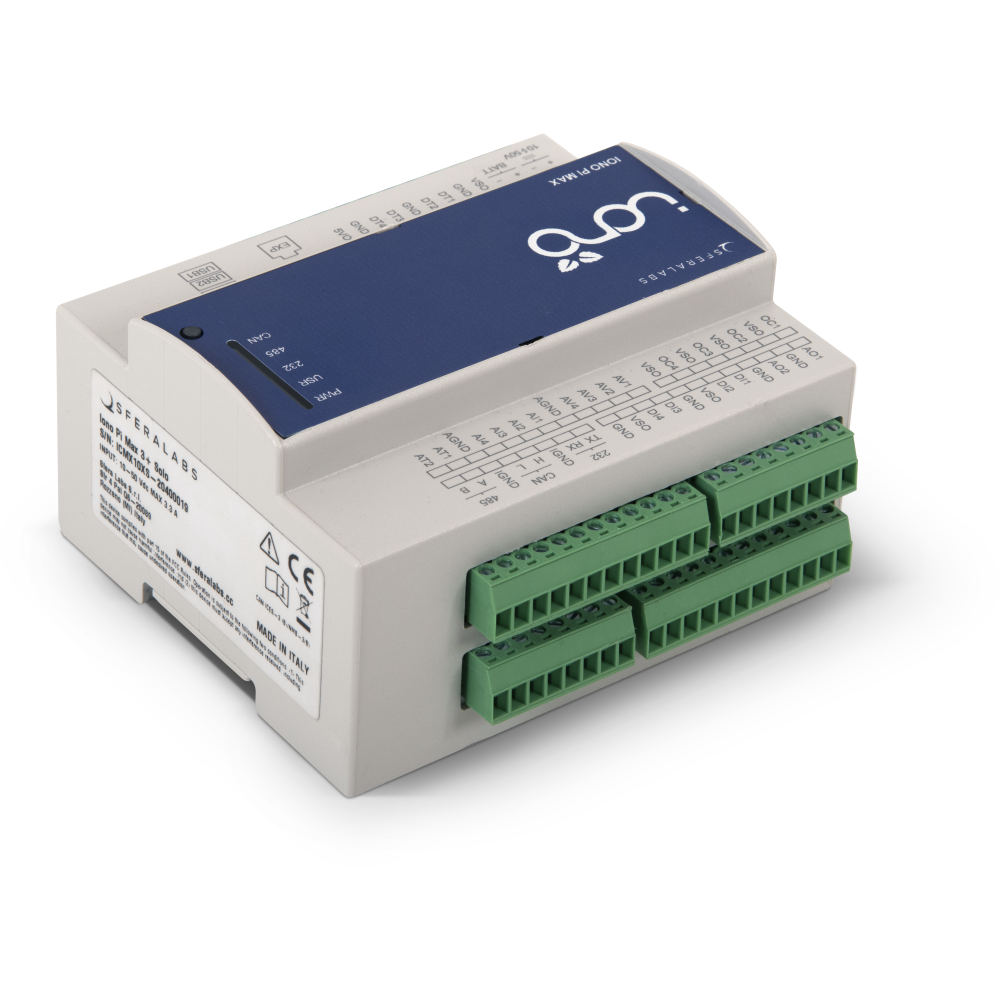Iono Pi Max v2
Industrial Raspberry Pi-based PLC featuring a comprehensive set of digital and analog I/Os, NO/NC relay outputs, integrated UPS, RS-232 and RS-485 serial ports, CAN bus, dual SD card architecture, real-time clock (RTC), hardware watchdog, and embedded secure element. Fully compliant with CE, FCC, and IC regulations.
DESCRIPTION
The All-in-One Industrial Control Solution, Powered by Raspberry Pi
Iono Pi Max is a highly versatile industrial PLC and server built on the Raspberry Pi Compute Module. With extensive I/O options and a wide array of standard communication interfaces, it's designed for professional environments that demand reliability, flexibility, and uninterrupted operation.
Compliance & Standards
Iono Pi Max meets the most rigorous international certifications:
- CE directives for low voltage and electromagnetic compatibility
- Harmonised standards for electrical safety, EMC emissions, and RoHS
- Fully compliant with FCC and IC regulations for North America
A True Raspberry Pi at the Core
Everything that runs on a Raspberry Pi runs on Iono Pi Max.
There’s no proprietary OS, SDK, or restrictions—you’re free to use:
- Any standard Linux distribution for Raspberry Pi
- Your preferred toolchains, languages, or frameworks
- Docker, Python, Node-RED, Java servers, or even simple Bash scripts
It’s Raspberry Pi, just industrial.
Developer-Friendly Control and Communication
- All I/O and system features are accessible via GPIO and I²C
- For easier development, a custom Linux kernel module lets you control everything through simple file I/O (read/write)
- RS-485 (Modbus) and RS-232 interfaces are mapped directly to the Raspberry Pi’s UART and USB buses—just access them via /dev/ttyXXX
- The CAN bus controller is connected via SPI and fully compatible with the SocketCAN Linux framework, enabling native integration with most CAN-based tools and applications
FEATURES
All-in-One Industrial PLC with Raspberry Pi Core and Advanced I/O
Iono Pi Max is a powerful and highly integrated industrial-grade controller based on the Raspberry Pi Compute Module. Designed for mission-critical environments, it combines rich connectivity, an advanced power system with UPS, and a comprehensive set of digital, analog, and relay I/O—all within a compact 6-module DIN rail enclosure.
Mounting and Connectivity
- DIN-rail mountable (6 modules wide)
- All connections (power, serial, I/O) via pluggable terminal blocks
Power Supply & UPS
- 10–50 VDC input, with reverse polarity and surge protection
- Integrated UPS with external 12V or 24V lead-acid battery
- 3.3A resettable fuse on input and protection on battery side
-
Dual auxiliary power outputs:
- 12–24 VDC (stabilized, software-controlled)
- 5 VDC (stabilized, software-controlled)
- Real-time voltage and current monitoring of all power inputs and outputs
Processing Cores
-
Supports Raspberry Pi Compute Module versions:
CM 3, 3 Lite, 3+ (8/16/32GB), 3+ Lite, 4S (8/16/32GB), 4S Lite -
Integrated ATSAME54 32-bit microcontroller
- 1MB flash, 256KB RAM
- Connected to Raspberry Pi via I2C, USB and CAN
- Enables low-level control of I/O and serial ports
Communication Interfaces
- RS-232 (115200 bps)
- RS-485 (Modbus), routed to serial or USB, with opto-isolation and ESD protection
- CAN V2.0B / CAN-FD, up to 8 Mbps, opto-isolated and ESD-protected
- I²C expansion bus, 5V-level and protected
- 10/100 Ethernet, 2 × USB 2.0 type-A ports with power control
- Internal USB 2.0 type-A port for embedded USB dongles
High Reliability & Security
- Dual microSD card architecture with software-controlled switching
- Independent hardware watchdog with GPIO interface and SD switching
- RTC with replaceable battery
- Integrated Microchip ATECC608 secure element
- Internal temperature sensors for monitoring
- Smart fan automatically regulated based on internal temperature/load
- SWD debug interface for firmware updates and microcontroller development
Inputs and Outputs
- 4 × power relays (NO/NC), 6A at 250V
- 4 × open collector outputs
- 2 × analog outputs (0–10V or 0–20mA)
- 4 × analog voltage inputs (0–20V)
- 4 × analog current inputs (0–20mA)
- 2 × Pt100/Pt1000 RTD temperature inputs
- 4 × digital inputs (0–40V)
- 4 × 5V digital I/O lines, with 1-Wire and Wiegand support
Additional Features
- RGB LEDs on front panel (power, serial activity, user-programmable)
- Piezoelectric buzzer, controlled via GPIO
- Front-panel push-button connected to GPIO
- Optional earthquake sensor module
HIGHLIGHTS
Power Supply
A high quality and stable power supply is extremely important to ensure reliable, continuous 24/7 operation in harsh industrial environments, both for the Raspberry Pi and connected peripherals.
Iono Pi Max accepts a wide power supply range, from 10 to 55VDC, and is able to handle substantial amounts of ripple, noise and supply voltage fluctuations. The power supply stage is a heavily protected and filtered circuit, using oversized electrolytic capacitors, diodes and inductors, and a high efficiency voltage regulator. It can deliver up to 4A to the 5V supply rail of the Raspberry Compute Module and USB ports.
The power supply stage includes resettable fuses, over current limiting, over voltage protection and thermal shutdown. It is also protected from reverse polarity and surge current ensuring reliability in harsh environments.
Moreover, Iono Pi Max features auxiliary regulated, monitored and controllable power supply outputs with different voltage ranges for external devices.
Digital, Analog, and Communication Interfaces
Integration with heterogeneous systems and devices is a key requirement in modern applications. The ability to collect field sensors’ data and interfacing with external systems is what more often than not determines the adoption of a solution.
Iono Pi Max features an incredibly wide range of analog and digital interfaces:
Four 4-20mA and four 0-10V, galvanically isolated, highly accurate inputs to connect standard industrial probes, as well as two additional inputs specific for PT100 and PT1000 temperature sensors. The analog signals are converted by the 24-bit AD4112 ADC, which provides for an incredibly high accuracy and resolution.
Six digital inputs, accepting up to 30V signals, let you integrate digital counters as well as general status signals. Furthermore, four additional low-voltage (0-5V) digital I/O can be employed as supplementary inputs or as data lines for interfacing with devices using digital protocols such as 1-Wire, Wiegand, or even proprietary/custom protocols.
As outputs, 4 relays with NC and NO terminals rated for 6A at 250V, and 2 analog outputs configurable as voltage (0-10V) and current (0-20mA) outputs.
Dedicated RS-232, and opto-isolated RS-485 (Modbus) and CAN interfaces can be used simultaneously to communicate with a huge variety of systems commonly found in industrial, residential, and automotive industries. The CAN interface supports CAN 2.0B and CAN-FD, with up to 8 Mbps bitrate.
All I/O lines and interfaces can be managed both from the Raspberry Pi module and the micro-controller.
Power Management
Iono Pi Max provides for fully-configurable power management, with low-power modes, allowing for off-grid installations and support for direct connection to solar panels.
The UPS supports 12V and 24V lead batteries. It keeps the battery charged with optimal charging current (independent from the main supply voltage) and seamlessly switches without any operation interruption when the main power supply fails.
Battery state and charge level can be monitored and automatic over/under-current protection mechanisms keep the battery in safe conditions.
Iono Pi Max provides for delayed shutdown and programmed boot-up functionalities for the Raspberry Pi module, as well as individual power control of sub-modules and external devices powered by Iono’s power outputs and USB ports, to limit power consumption while keeping the required functionalities active.
In-field updates
Any system needs updates and, often, security patches must be applied to low level operating system components or even to the micro-controller’s firmware.
Iono Pi Max features a double, switchable, SD card architecture as well as a powerful 32bit micro-controller, fully reprogrammable directly from the Raspberry Pi module.
The two available SD card slots are routed to the primary and secondary buses of the Raspberry Pi Compute Module through a high-speed switching matrix. The SD connected to the primary bus is where the system boots from, while the secondary SD is seen as an external drive which can be used for extra storage or for system redundancy. At any time the secondary SD can be flashed with a new system image and switched to be used as the primary one.
And while your application is running, a brand new firmware can be downloaded by the Raspberry Pi and uploaded to the micro-controller without any service interruption. And, using tools like OpenOCD, you can even perform, from the Pi, on-chip debugging of the firmware running on the micro-controller.
System monitoring
Other than the ability to control the external environment, self-diagnosis is of extreme importance for dependable control systems.
Iono Pi Max implements several mechanisms to make sure your applications are running flawlessly, under the expected conditions.
The hardware watchdog monitors a heartbeat signal on a GPIO and, if a hang occurs, the Raspberry Pi module is automatically reset. The watchdog can also be configured to automatically switch the boot SD card upon consecutive failed restarts.
Both mains and battery power inputs, as well as the the auxiliary power output, are monitored in voltage and current draw.
USB ports are current limited and have thermal shutdown protecting the device and the connected loads.
Internal temperatures can be monitored and an embedded fan can be controlled to improve heat dissipation.
All the internal measurements and fault statuses are available to your application to trigger notifications and/or take action to restore normal functionality.
